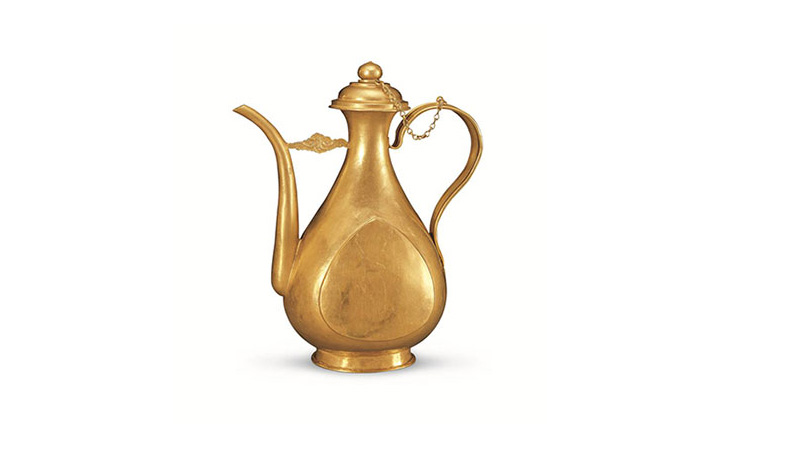
Cultural relics of the Ming Dynasty (1368-1644) to be on display in British Museum include a porcelain jar (pictured here) produced in Jingdezhen and a golden teapot (unpictured) from Hubei Provincial Museum.[Photo/Provided to China Daily]
London will host a major exhibition of 15th-century Chinese artwork, including paintings, sculptures and porcelain, depicting the heyday of the Ming Dynasty (1368-1644).
The exhibition, at the British Museum, was announced on Aug 27 by its initiator, Art Exhibitions China, which oversees China’s international display of cultural relics.
Ming: 50 Years That Changed China, covering the half-century from 1400, will be open from Sept 18 to Jan 5.
On display will be 108 cultural relics from 10 museums in China, plus collections from the British Museum and museums in Japan, the United States and Europe.
“This was a time the political and social system of the dynasty became solidified, and the country also experienced huge change. The period is representative of that dynasty,” said Yao An, deputy director of Art Exhibitions China, adding that the event will be a highlight of this year’s about 20 overseas cultural relic exhibitions of China.
“China was in frequent contact with the rest of the world at that time, and its artists, artisans and scholars also influenced other cultures,” Yao said.

Cultural relics of the Ming Dynasty (1368-1644) to be on display in British Museum include a porcelain jar (unpictured) produced in Jingdezhen and a golden teapot (pictured here) from Hubei Provincial Museum.[Photo/Provided to China Daily]
During this time, Beijing became the capital of China, and the great fleets of Zheng He (1371-1433) set sail and reached the shores of eastern Africa.
The exhibition will be in five parts - court, arts of war, arts of peace, religious belief and diplomacy - to give an overview of the society.
Jessica Harrison-Hall, co-curator from the British Museum, said “reading” an artwork may differ in various cultures.
“When a Chinese audience sees a painting you see figures and stories. But we see beautiful landscapes.”
Nevertheless, she said the British public had a basic knowledge of the dynasty.
“They know about porcelain,” she said, adding that many British people probably knew more about the later period of the Ming Dynasty after the Portuguese and Spanish came to China to trade. “Their houses and dining tables have Chinese blue and white vases but they don’t know much about the earlier period, which in China was a more culturally important period.
“We’d like to take away people from the idea that China became international after the Europeans arrived. China in the early Ming Dynasty was very international.”
According to Yao from Art Exhibitions China, the last decade witnessed wider cooperation between Chinese museums and their British counterparts, and exhibitions became more elaborate.
“They (the British museums) may lead in museum management or development of cultural products, but our team of experts in different fields will be able to help them.”